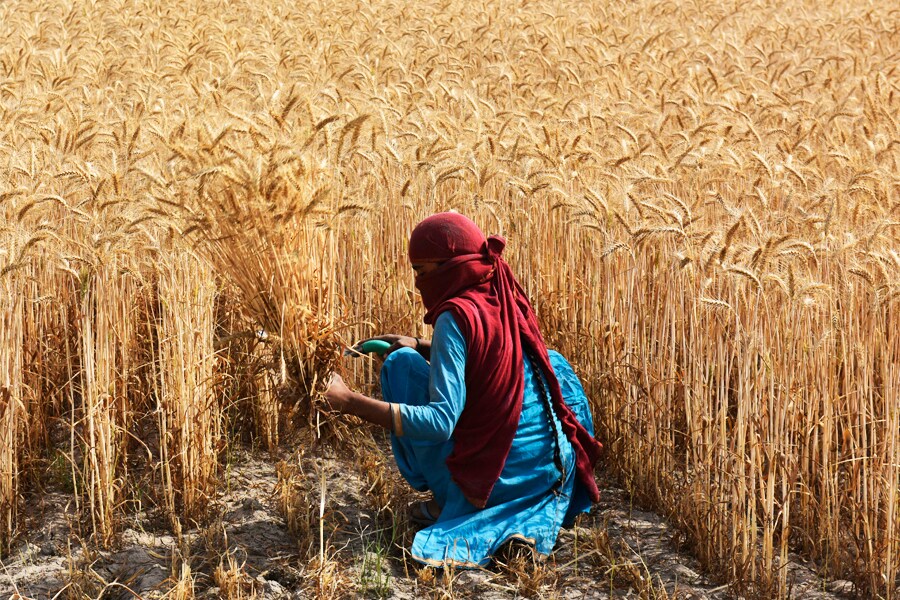
Countries growing 70% of world's food face 'extreme' heat risk by 2045
Extreme heat risk will expand to 64 nations by 2045—representing 71 percent of current global food production—including major economies China, India, Brazil and the United States
 A farmer harvests wheat crop at a village on the outskirts of Gurugram, India. Temperature spikes are causing mounting concern for health, particularly for those working outside in sweltering conditions, which is especially dangerous when humidity levels are high. Image: Vipin Kumar/Hindustan Times via Getty Images
A farmer harvests wheat crop at a village on the outskirts of Gurugram, India. Temperature spikes are causing mounting concern for health, particularly for those working outside in sweltering conditions, which is especially dangerous when humidity levels are high. Image: Vipin Kumar/Hindustan Times via Getty Images
Paris, France: Blistering crop-withering temperatures that also risk the health of agricultural workers could threaten swathes of global food production by 2045 as the world warms, an industry analysis warned Thursday.
Climate change is already stoking heatwaves and other extreme weather events across the world, with hot spells from India to Europe this year expected to hit crop yields.
Temperature spikes are causing mounting concern for health, particularly for those working outside in sweltering conditions, which is especially dangerous when humidity levels are high.
The latest assessment by risk company Verisk Maplecroft brings those two threats together to calculate that heat stress already poses an "extreme risk" to agriculture in 20 countries, including agricultural giant India.
But the coming decades are expected to expand the threat to 64 nations by 2045—







